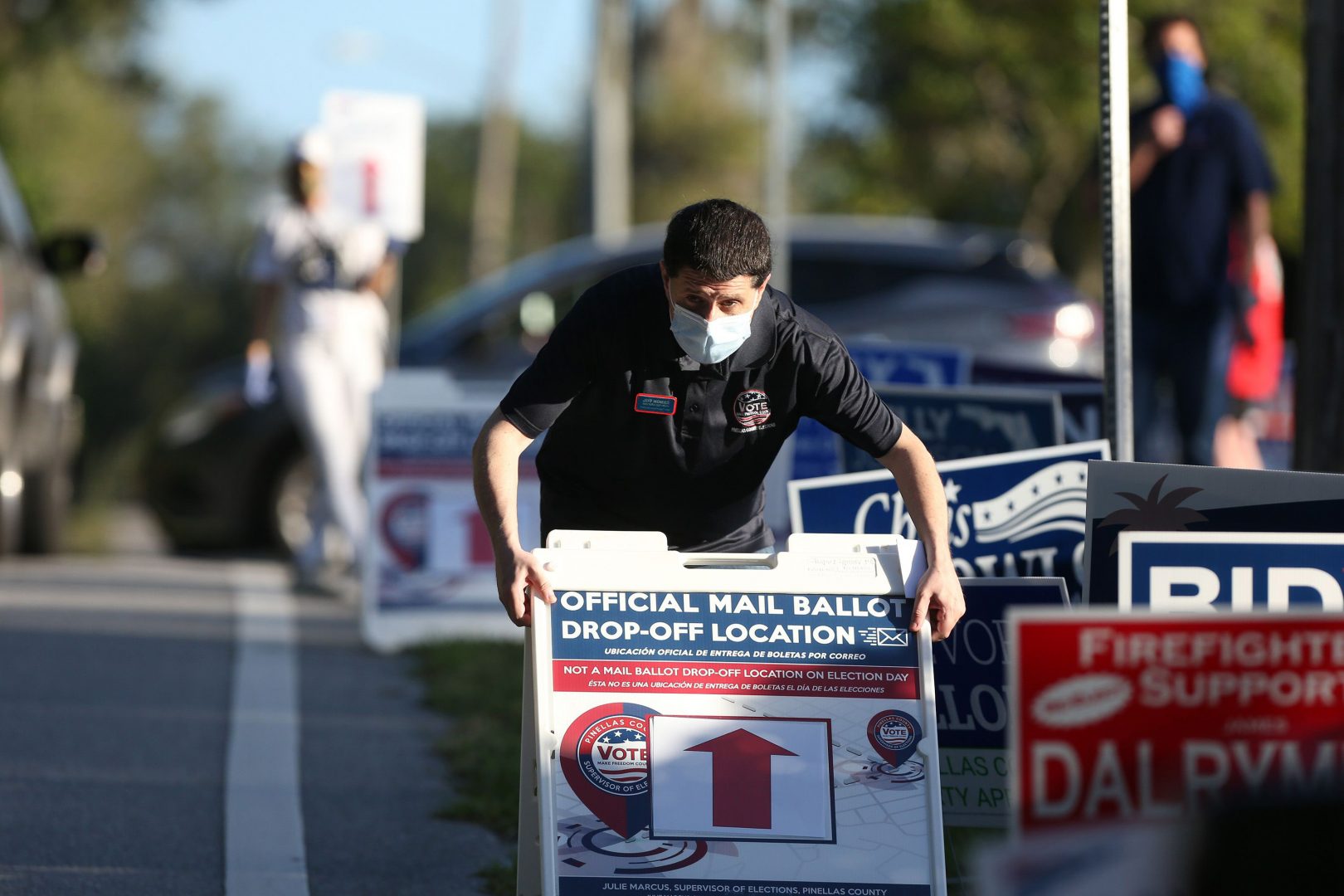
By Mark Niquette | Bloomberg News
This election night, there’s a new statistic that may be the most important number for people trying to figure out whether Donald Trump or Joe Biden won the presidency.
Election officials in key battleground states and at The Associated Press are adopting a new measure aimed at estimating how much of the vote has yet to be counted.
With unprecedented mail-in voting this year because of the pandemic, the vote count will be more fragmented and results could be delayed in key swing states. That means the traditional number political analysts watched on election night — the percentage of precincts reporting — won’t capture the scope of the outstanding votes.
The AP plans to report results using an “estimated expected vote percentage” for specific races that includes all of the votes that the wire service expects to be cast, including mail-in ballots, provisional votes — ballots cast when a voter’s eligibility is questioned that are held for a period of days after an election to be checked — and military and overseas ballots.
Key states including Pennsylvania and Ohio plan to post the number of outstanding ballots to make it clear whether the unofficial vote margin between the candidates is large enough to declare an unofficial winner.
“Our goal is to provide as much transparency as possible on how far along the counties are as they carry out this critically important accurate counting process,” Pennsylvania Secretary of State Kathy Boockvar told reporters on an Oct. 14 call.
Some states, namely the crucial battlegrounds of Pennsylvania and Wisconsin, aren’t allowed to even open the mail-in ballots until Election Day, which means the in-person vote totals will be available well before the mail-in count. With many Democrats planning to vote by mail, it could lead to an artificially high margin for Republican votes in the early hours of the vote counting.
By contrast, states like Florida, North Carolina and Arizona can start counting mail-in votes before Election Day, which means they will be able to post much more complete tallies soon after the polls close on Nov. 3.
The AP said it will divide statewide vote totals as they come in by an “estimated expected total votes” number based on its proprietary research, knowledge and expertise. That will represent the percentage of votes counted of the total that the AP estimates will be certified and may fluctuate as results come in.
In Pennsylvania — which has the highest odds of any state of being the tipping point in the presidential race, according to an analysis by the FiveThirtyEight website — counties can’t begin counting the expected 3 million mail-in ballots until 7 a.m. on Election Day. That virtually guarantees there will be ballots left to count after the election, so the number of uncounted votes will be critical information.
Boockvar has said she expects the vast majority of the ballots will be counted by the Friday after the election, and that Philadelphia and other larger counties have invested in new equipment and staff to count ballots as quickly as they can without stopping until they’re done.
In Wisconsin, 39 municipalities that count their ballots at a central location — including the city of Milwaukee, the state’s most populous — will each report the number of absentee ballots received by the time polls close at 8 p.m., said Meagan Wolfe, administrator of the Wisconsin Elections Commission.
Wolfe told reporters last week she doesn’t have an estimate of how long it will take to count the absentee ballots but said there have been 1.57 million requested — compared with 144,802 mail-in absentees for the 2016 general election. Clerks are required to keep counting until all ballots are tabulated, she said.
Michigan, where clerks can start processing mail-in ballots for 10 hours on Nov. 2 but can’t count them until Election Day, doesn’t post results on the state’s website until officials get complete counts from counties. Secretary of State Jocelyn Benson has said she’ll provide regular updates as ballots are tabulated and expects the count to be done by Friday at the latest.
Ohio counties are able to process and scan mail-in ballots as they are received as long as results are not tabulated or released until after polls close at 7:30 p.m. on Election Day, so the first results reported in the Buckeye State are typically most of the absentee ballots received before polls closed.
But the state counts ballots that are received up to 10 days after the election as long as they’re postmarked by Nov. 2, so it’s adding a category for “Outstanding Absentee & Provisional Ballots” for its election night reporting, Secretary of State Frank LaRose said.
That will show the number of late-arriving ballots and those that could still arrive based on the applications, as well as the number of provisional ballots that are held for 10 days while voter eligibility is determined.
___
(c) 2020 Bloomberg News
Visit Bloomberg News at www.bloomberg.com
Distributed by Tribune Content Agency, LLC.






